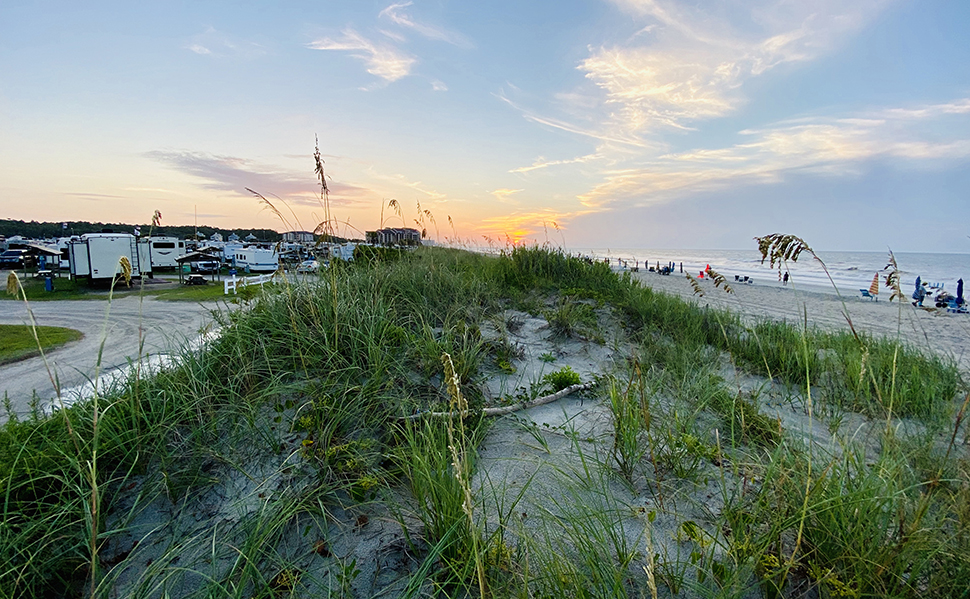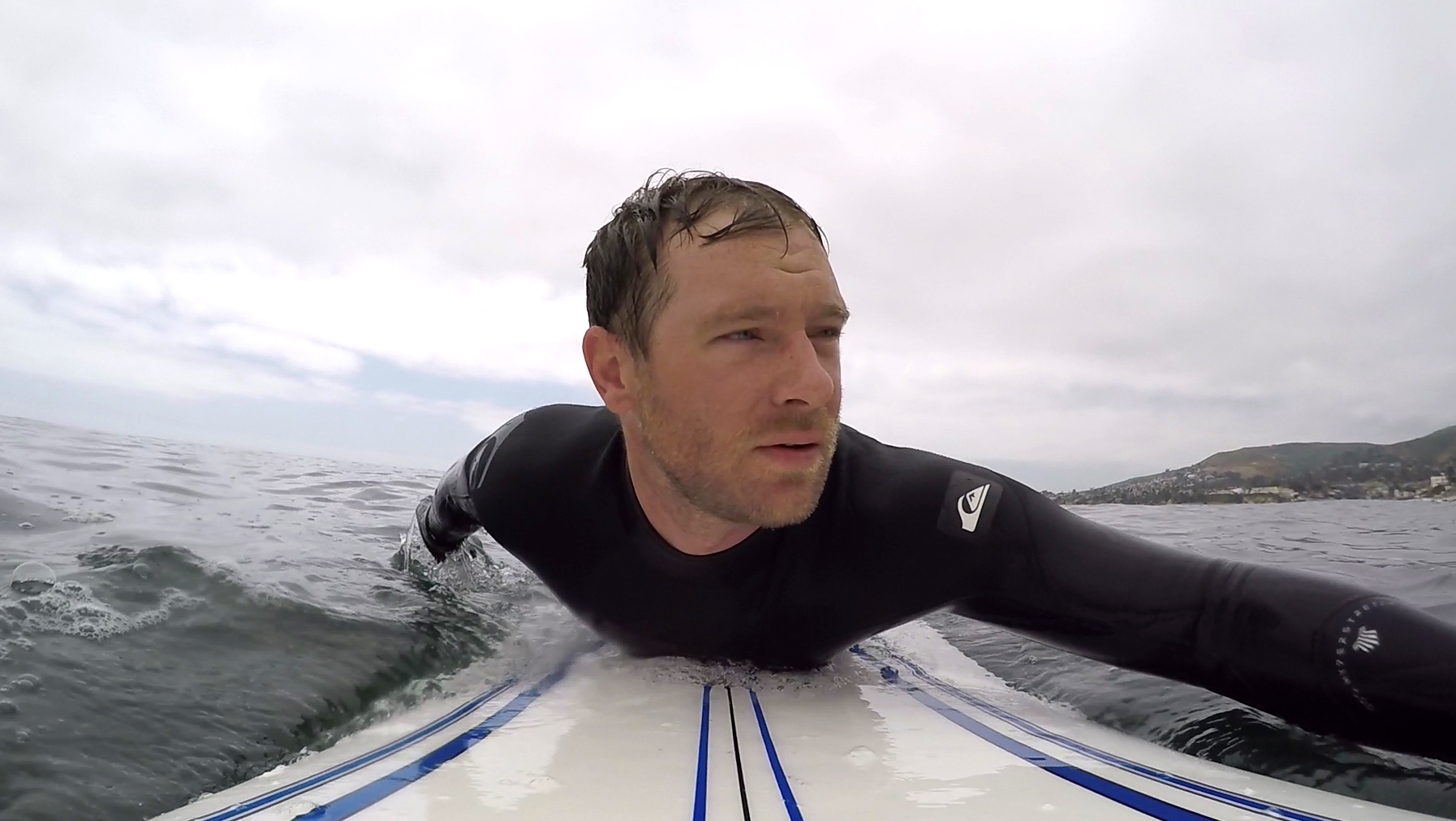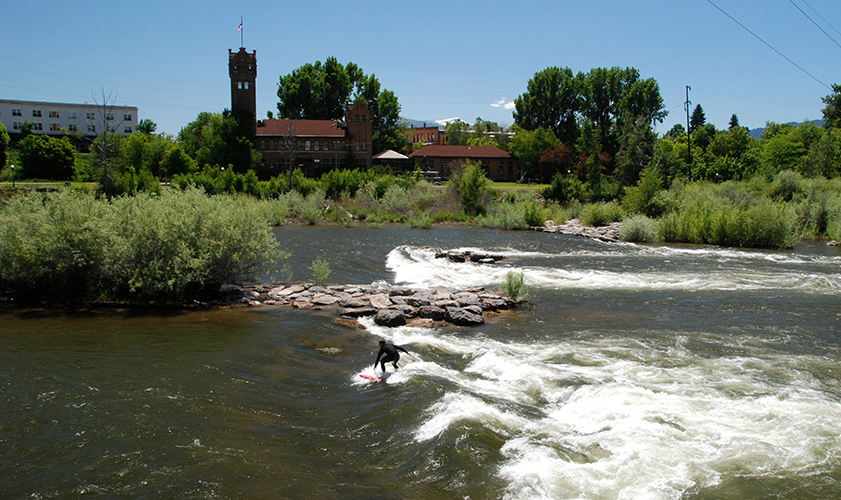RV Surfing Trips From Coast to Coast
Have you ever thought about going on an RV surf trip? Or maybe you’re going on an RV trip to the beach and want to try surfing for the first time? The reality is, when you’re an RVer, the options for incredible outdoor adventures—like surfing—are truly limitless.
I am not a professional surfer by any means. I’m just a guy from Minnesota who discovered the Pacific Ocean in my 20s and never looked back. However, I would consider myself a professional RVer—I’ve been RVing full-time for over six years, so I’ve picked up a few RV pro tips along the way. My hope is that these RV coast to coast tips will help inspire others to live out their RV surfing dreams.
1. Location Is Key
You might think that picking a location for your RV surf trip is as simple as finding out where the best waves are. Are you looking for a place like Newport Beach, California, with big waves, or do you prefer Myrtle Beach, North Carolina, with its smaller, more scenic surf? And while wave size is a critical part, there are a few other less obvious factors to consider.
To start, always check the latest surf reports, tide graphs and weather conditions for wherever you’re going. Changes in weather—especially wind—can easily create monster waves or blow out the surf and create no waves at all. Scan any relevant news stories about your location as well. This will help notify you of things like algae blooms or shark sightings.
Open up Google maps or another digital map that can give you a satellite picture and check to see if there are any piers, cliffs or unusual coastal characteristics that may be hard to surf around. Lastly, see if there is a surf shop or rental place nearby. This will not only come in handy should you want to try out a different surfboard, but it will also help offer things like new leashes, wetsuit repairs and extra surfboard wax (always handy to have).

Myrtle Beach is not only beautiful, but the warm water offers rolling gentle waves that are perfect for beginners and longboarders.

Newport Beach has an iconic surf culture. Be warned, the waves are great but the lineup can be fierce.
2. Bring Extra Gear
One of the biggest perks of having an RV is that I can haul all of my boards and not have to worry about packing my car to the brim. With our toy hauler, there is so much room for not only all of my adventure gear, but also my wife and kids’ stuff too. This is especially important if you’re planning to RV full-time or go on an extra long trip. The larger space allows you to be more spontaneous with your travels. A perfect example of this spontaneity happened on a recent road trip in Northern California.
While we were driving along the coast, my wife asked to stop so she could get up and feed our baby. When I pulled over, it just so happened that we had stopped right in front of a beach with incredible waves. Luckily, I had an extra wetsuit on-hand that could handle the colder waters, so I jumped in. In the time it took to change and feed our daughter, I was able to sneak in a few awesome waves. Even if you don’t think you’ll need a longboard or an extra wetsuit, bring it with you so you don’t limit your adventuring.

Toy Haulers are excellent versatile spaces. At times we’ve used ours as an office, an extra room for guests and, of course, to store surfboards.
3. Be Adaptable
As is the case in life, there will be unexpected changes that force you to adapt. This is especially true when you’re traveling in an RV, as there are plenty of things outside of your control—weather, traffic, closures. One of the things I always try to do when heading out on a surf trip is to pick a location that offers more than just surfing—maybe there’s a cool bike path or a large park nearby. This way, if the surf conditions are poor, I have other things to do. Even if I do end up in a place that’s strictly for surfing and I’m not able to ride any waves, I still try to take advantage of the location, either by swimming, bodysurfing or creating my own mini waves in the RV park’s public pool.
4. You Don’t Need An Ocean
That’s right—you don’t need an ocean to surf. Rivers, streams and lakes can all provide some pretty awesome freshwater surfing, you just have to know where to look. A few landlocked states even offer surfing parks, where perfect waves are created by machines in pools. Don’t let your location limit you—I’ve surfed a rapid river in the middle of Montana, I’ve surfed a boat wake on a lake in Minnesota and both were just as fun as surfing in the open ocean.

If the waves aren’t working out for you, head into town to explore, take a hike or chill out by a campfire.

If you decide to surf in the rivers of Montana, bring a wetsuit—the water is COLD.
5. East Coast vs. West Coast
Over my six years of full-time RVing, I’ve traveled and surfed from California to Washington, Vermont to Florida, even Texas to Minnesota. And no matter where I go, people always ask: Which coast is better for surfing? There are some key differences between East Coast and West Coast beaches—waves are larger and more consistent on the West Coast, but the water is much warmer on the East Coast. Surfing spots are usually less crowded on the East Coast, but you may have to wait a long time before a decent wave comes. And I may be able to watch the sun dip into the ocean in California, but I also can surf alongside a pod of dolphins in Vermont.
I could go back and forth over which coast is better, but the truth is the experience of paddling out, feeling the salt in the air and catching that very first wave is simply amazing, no matter where you are. And having your home on wheels mere steps from the shore, ready to offer you a warm shower or a bite to eat, makes the whole surfing experience that much better.

I used to daydream about surfing when I was younger. Now I can just pull over and ride whatever waves I want..
Eric and his family take their RV surf trips in a 2015 Heartland Road Warrior 425.
This story first appeared on Thor Industries.





